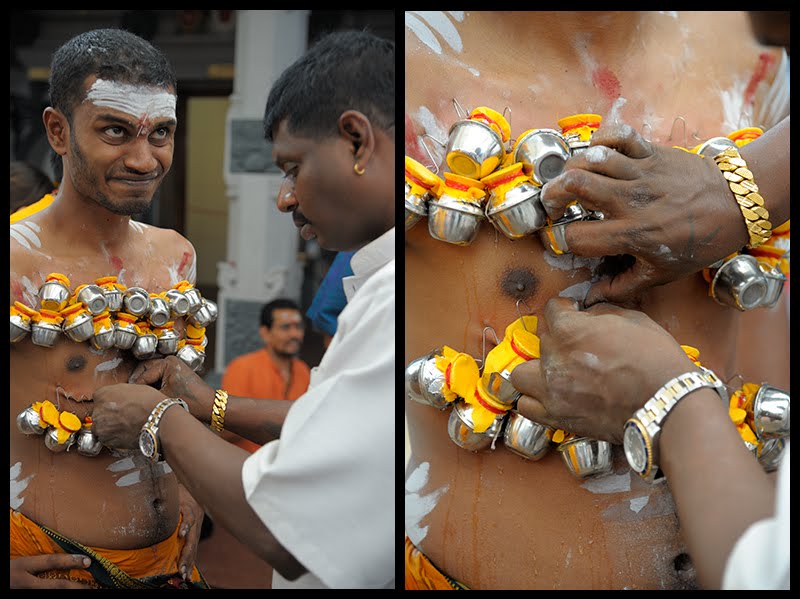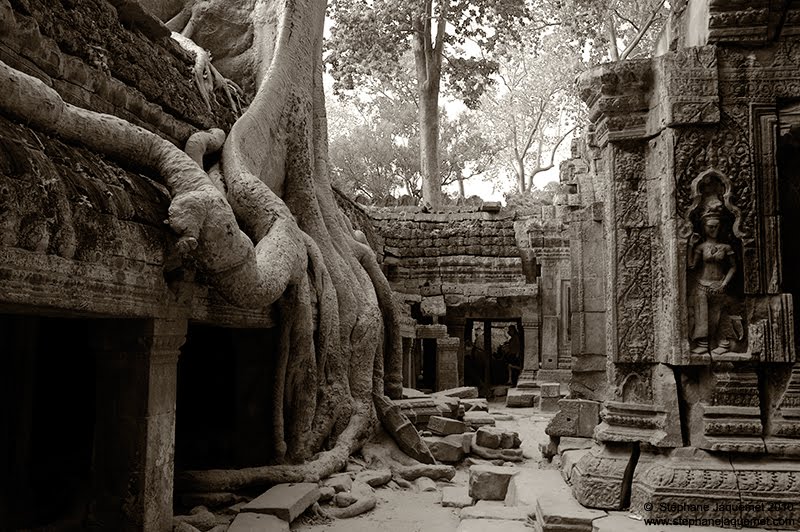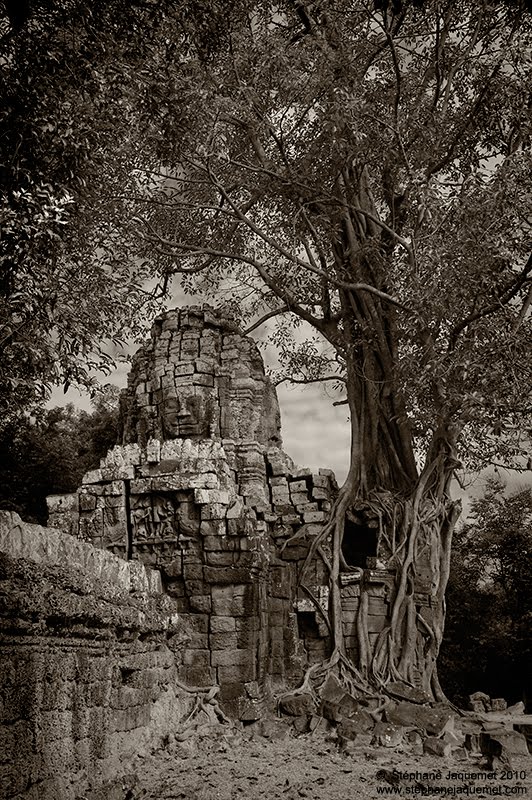Thursday, March 31, 2011
Wednesday, March 30, 2011
Tuesday, March 29, 2011
Monday, March 28, 2011
Sunday, March 27, 2011
Saturday, March 26, 2011
Angkor - Of Ruins & Roots (9)
Strangler fig tree is a common name for a number of tropical and sub tropical plant species. These plants begin their life growing on another tree or object, when their seeds, often bird dispersed, germinate in crevices atop other trees. These seedlings grow their roots downwards and envelop the host while also growing upward to reach into the sunlight zone above the canopy.
Labels:
black n white,
cambodia,
strangler fig tree,
ta som
Friday, March 25, 2011
Angkor - Of Ruins & Roots (8)
Two main species of trees are seen growing within the Angkor ruins: the kapok tree and the strangler fig tree.
Also called Java Kapok, Silk Cotton and Ceiba, the kapok tree grows to 60 - 70m tall. It has a very substantial trunk of up to 3m in diameter with buttresses. Its branches are sometimes covered by large robust thorns.
While Cambodian find the tree mostly useless as it is too soft for construction, the fibre obtained from its seed pods is light, buoyant and resistant to water. It was used to be employed as an alternative filler in mattresses, stuffed toys as well as for insulation and in life jackets.
Thursday, March 24, 2011
Wednesday, March 23, 2011
Tuesday, March 22, 2011
Monday, March 21, 2011
Sunday, March 20, 2011
Saturday, March 19, 2011
Angkor - Of Ruins & Roots (2)
I was just watching a replay of Lara Croft - Tomb Raiders and recognised this particular area as Angelina Jolie was following a little girl through the temple to find a side entrance to the secret chambers...
Friday, March 18, 2011
Angkor - Of Ruins & Roots (1)
To follow is a black & white series depicting how trees took over the temples after they had been disused, forgotten and recovered by a dense tropical forest.
Thursday, March 17, 2011
Wednesday, March 16, 2011
Tuesday, March 15, 2011
Images of the Thaipusam - Singapore (11)
Monday, March 14, 2011
Images of the Thaipusam - Singapore (10)
Sunday, March 13, 2011
Saturday, March 12, 2011
Friday, March 11, 2011
Images of the Thaipusam - Singapore (7)
Thursday, March 10, 2011
Images of the Thaipusam - Singapore (6)

Thaipusam is dedicated to the Hindu god Murugan, the son of Shiva and Parvati. It is believed that on this day, Goddess Parvati presented a lance to Lord Murgan to vanquish the demon army of Tarakasura and combat their evil deeds. Therefore, Thaipusam is a celebration of the victory of good over evil.
Wednesday, March 9, 2011
Images of the Thaipusam - Singapore (5)

One of the major features of Thaipusam celebrations is body piercing with hooks, skewers and small lances called 'vel'. Some of the devotees pull chariots and heavy objects with hooks attached to their backs. Many others pierce their tongue and cheek to impede speech and thereby attain full concentration on the Lord. Devotees enter into a trance during such piercing due to the incessant drumming and chanting of "vel vel shakti vel."
Tuesday, March 8, 2011
Images of the Thaipusam - Singapore (4)

Devotees prepare for the celebration by cleansing themselves through prayer and fasting approx. 48 days before Thaipusam. Kavadi-bearers have to perform elaborate ceremonies at the time of assuming the kavadi and at the time of offering it to Murugan. The kavadi-bearer observes celibacy and takes only pure, Satvik food, once a day, while continuously thinking of God.
Monday, March 7, 2011
Images of the Thaipusam - Singapore (3)
Sunday, March 6, 2011
Images of the Thaipusam - Singapore (2)
Subscribe to:
Posts (Atom)






















